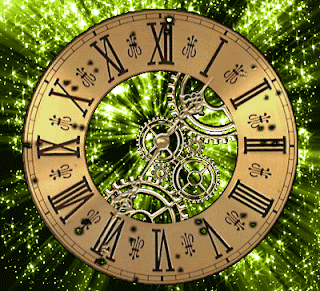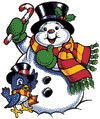Погода. “Everything is good in its season”
“Now the North wind ceases”
The warm South – west awakes,
The heavens are out of fleeces,
And earth’s green banner shakes”.
◔◡◔ Future weather forecast for the year 2050
Self-study Training
Topic: ‘Seasons and Weather'
I. Hello, dear Friend! The topic of this lesson is ‘Seasons and Weather'. Before you start working on it close your eyes and try to imagine a beautiful sunny day. Feel the warm wind that blows into your face and smile. So let's start the lesson with this pleasant moment.
II. Read the following words. Some of them are familiar to you, so learn the words and their translation if they are new to you.
Conditions - умови
Sunny - сонячний
Windy - вітряний
Cloudy - хмарний
Foggy - туманний
Ic(e)y - льодяний, холодний
Showery - дощовий; проливний
Humid - вологий, мокрий, сирий
It's pouring with rain / it's raining cats and dogs' - Йде проливний дощ (Як з відра ллє)
Boiling - жаркий,
Chilly - прохолодний
Freezing - льодяний
Breeze - легкий вітерець
Gale - шторм; буря
Hurricane - ураган; тропічний циклон
Spell - проміжок часу, період (of - чогось)
Thunderstorm - гроза
Thunder - грім
Lightning - блискавка
Look at this list of common weather words. Notice that it is very common to form adjectives by adding ‘-y'.
| Noun | Adjective | |
Sun - сонце | Sunny - сонячний | |
| Wind - вітер | Windy - вітряний | |
| Cloud - хмара | Cloudy - хмарний | |
| Ice - лід | Ic(e)y - льодяний, слизький, холодний | |
| Fog - туман | Foggy - туманний | |
| Shower - ливень | Showery - проливний | |
| Heat - жара | Hot - жаркий | |
| Humidity - волога | Humid - вологий |
Note:
When it rains for a short period of time, we call it a shower, e.g.: "We had several showers yesterday afternoon."
When it is raining a lot we often say it's pouring or it's pouring with rain. This phrase is much more common than "it's raining cats and dogs".
III. Fill in the gaps.
IV. Try to find as many words connected with the topic ‘Seasons and Weather' as possible:

Raining, stormy,
sunny, cloudy,
windy, snowing,
foggy, hot,
warm, mild,
cold, freezing,
autumn, spring,
winter, summer.
V. Read the text and be ready to answer the questions after it.
Seasons and Weather
There are four seasons in a year: spring, summer, autumn, and winter. Every season is beautiful in its own way.
When spring comes nature awakens from its long winter sleep. The days become longer and the nights become shorter. The ground is covered with emerald-green grass and the first flowers. The air is fresh, the sky is blue and cloudless, and the sun shines brightly. The trees are in full blossom. The nightingale begins to sing its lovely songs, and sweet melodies may be heard from every wood and park. The days are warm and everything is full of life and joy.
Spring is followed by summer. The weather is usually fine in summer, but it can be very hot, especially in July. Sometimes there are storms with thunder and lightning. In summer people try to get away from the city noise and spend more time in the open air. They pick mushrooms and berries in the forest, swim in the rivers and lakes, go fishing and boating. Most people prefer to have their holidays in summer.
Autumn begins in September. The days become shorter and the nights become longer. The leaves turn yellow, red and brown and fall to the ground. Most birds fly away to warm countries. There is a short spell of dry sunny weather in September, which is called ‘Indian Summer'. It is a beautiful time when the sky is cloudless, the trees around are golden, the air is transparent and it is still warm. But gradually it gets colder and colder. It often rains in October and November which makes autumn an unpleasant season.
In winter the sun sets early and rise late. The rivers and lakes are frozen over. Everything is covered with snow. Sometimes it is very cold, about 25-30 °C below zero. Going out in such weather isn't pleasant. Winter is a good time for sports. People go in for skating and skiing. Tobogganing is also popular, not as a kind of sports, but rather as a fun.
VI. Answer the questions:
1. How many seasons are there in a year?
2. When does nature awaken from her long winter sleep?
3. Why do we like spring so much?
4. Why do people try to spend more time in the open air in summer?
5. Is summer the best season for tourism?
6. Where did you go last summer?
7. What do you usually do on a nasty rainy day?
8. What is the weather like in winter?
9. Do you go in for skating or skiing?
VII. Match the columns:
VIII. Read the sentences and say if they are true or false. If the sentence is not true, make it true.
IX. Let's relax and listen to the song by Frank Sinatra - ‘The Autumn Leaves'. Click twice on the icon below.
X. Listen to the song once more and follow the words. Some of them are missing. Put the missing words into the gabs.
Autumn Leaves
Lyrics by Johnny Mercer

XI. Read the poems about each season of the year. Which do you like the best?
Spring
In the spring, in the spring,Sweet and fresh is everything!
Winter winds are no more blowing
In the fields all is growing.
In the spring, in the spring
Sweet and fresh is everything
This is the season when snowdrops bloom,
When nobody likes to stay in the room.
This is a season when birds make their nests,
This is the season we all like best.
Summer
This is the season when nights are short,
And children have plenty of fun and sport.
Summer's here. Days are long.
And the sun is bright and strong.
Woods are green, the sun is bright,
And the wind is warm and light.
 I can bathe, and play and run.
I can bathe, and play and run.
Summer holidays are fun.
The sun shines,
The trees bloom,
The sky is blue,
The rains are few.
Autumn
This is the season when fruit is sweet.
This is the season when school friends meet.
This is the season when mornings are dark
And birds do not sing in the wood and the park.
The summer is over, the trees all are bare,
There is mist in the garden and frost in the air.
All leaves are yellow and red,
They fall from trees to ground.
The sun is low, seldom bright,
Sometimes it's raining through all night.
I like all trees in autumn time
A maple, a chestnut and a lime.
Their leaves are yellow, red and brown
And they are gently falling down.
Winter
And birds do not sing in the wood and the park.
This is the season when children ski
And Santa Claus brings the New Year Tree.
The snow is falling,
The wind is blowing.
The ground is white
I wish I were a snowman
So tall and big and white.
I'll never have to clean my teeth
Or go to bed at night.
But maybe Mister Snowman
Is wishing he were me?
But I'll be here when summer comes,
And where will the snowman be?
XII. Exercise 2. Change the following sentences according to the ехаmрlе.
Ex: When the sun shines ... (sunny).
When the sun shines we say that the weather is sunny.
Answer: we say that the weather is sunny
1. When it rains ... (rainy).
2. We sometimes have rain in July and August.
3. We seldom have warm weather in December.
4. It is sometimes in March.
5. It is always frosty in January.
6. We often have windy weather in February.
7. It is never cold in June.
8. It is often chilly in November.
Read, write, sing songs and be happy (: !





.gif)















.gif)

.gif)












 The custom of sending Christmas cards to friends and family originated in Britain, too. In 1843 John Calcott Horsley designed the first one for Sir Henry Cole. Thus began a real spread of sending Christmas cards and this practice soon became an established traditon. Favoured designs were Christmas feasts, church bells, plum and turkey as well as religious themes. Every year more than a billion Christmas cards are now sent in the United Kingdom. Many of them are sold in aid for charities.
The custom of sending Christmas cards to friends and family originated in Britain, too. In 1843 John Calcott Horsley designed the first one for Sir Henry Cole. Thus began a real spread of sending Christmas cards and this practice soon became an established traditon. Favoured designs were Christmas feasts, church bells, plum and turkey as well as religious themes. Every year more than a billion Christmas cards are now sent in the United Kingdom. Many of them are sold in aid for charities. Since 1840 the decorated and illuminated Christmas tree has gained popularity in England. Prince Albert brought this rite over from Germany. In 1848 the Illustrated London News published a picture of the Royal Family around one. The English families followed the Royal example and it can truly be called a Victorian innovation. Each year a giant Christmas tree is set up and decorated near the statue of Lord Nelson in Trafalgar Square. It commemorates Anglo-Norwegian cooperation during World War II.
Since 1840 the decorated and illuminated Christmas tree has gained popularity in England. Prince Albert brought this rite over from Germany. In 1848 the Illustrated London News published a picture of the Royal Family around one. The English families followed the Royal example and it can truly be called a Victorian innovation. Each year a giant Christmas tree is set up and decorated near the statue of Lord Nelson in Trafalgar Square. It commemorates Anglo-Norwegian cooperation during World War II. The pudding might contain coins or lucky charms for children. For afternoon tea Christmas cake is offered. It is rich baked fruit cake with marzipan and icing. A party favourite are Christmas crackers. There will be one to each plate on the Christmas dinner table. A Christmas cracker is a brightly coloured paper tube, twisted on both ends and filled with a party hat, a riddle and a toy.
The pudding might contain coins or lucky charms for children. For afternoon tea Christmas cake is offered. It is rich baked fruit cake with marzipan and icing. A party favourite are Christmas crackers. There will be one to each plate on the Christmas dinner table. A Christmas cracker is a brightly coloured paper tube, twisted on both ends and filled with a party hat, a riddle and a toy.



